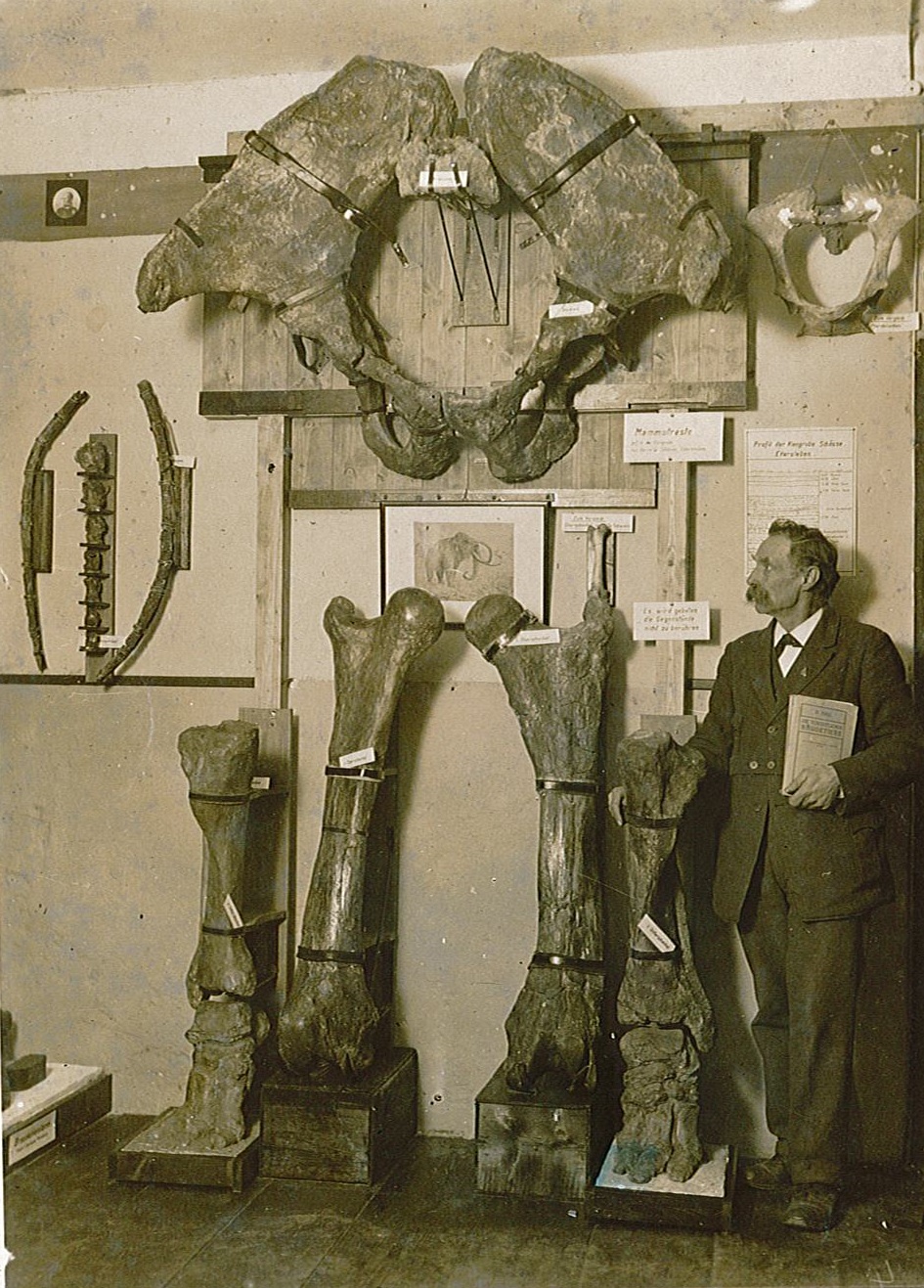
The history of the Spengler Museum's collection dates back to the 19th century. In 1872, the Verein für Geschichte und Naturwissenschaft in Sangerhausen und Umgegend (Society for History and Natural Science in Sangerhausen and the Surrounding Area) was founded, which opened its first museum in the town in 1911. Gustav Adolf Spengler (1869 - 1961), a master carpenter and local historian from Sangerhausen, assembled a private collection on prehistory, natural history and the history of the town. From the 1920s it was on display as the "Spengler Museum" in his home at Hospitalstraße 56. In the early 1930s, Spengler excavated a complete mammoth skeleton near Edersleben, prepared the bones and displayed them in his museum. In 1937, the city bought Spengler's extensive collection. In 1952, the museum's purpose-built building was erected at the railway station.
Today the Spengler Museum is our regional museum for Sangerhausen and the surrounding area. Geology, natural history, the Ice Age, prehistory and early history and the town history of Sangerhausen - these are the major themes of the museum, which are presented with many interesting, old and valuable exhibits as well as texts and pictures. The museum's attraction is the skeleton of the steppe mammoth from Edersleben. Changing special exhibitions and events round off the programme.